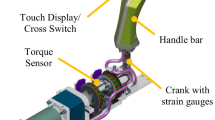Abstract
The interaction between vehicle and driver within the close-loop perception and control process is a very important research aspect in the development of new vehicles. Previous investigations indicated the increasing importance of the feeling of safety in conventional and severe driving situations. A typical European situation is fast driving on autobahn or highway with simultaneous effects of lateral dynamics and vertical disturbances. Especially in this case the impression of safety influences the overall driver’s vehicle assessment. For vehicle manufacturers it is essential to provide an adequate feeling of safety, whereby the vehicle has to be stable and comfortable and has to meets customers’ expectations [1]. Most investigations and test definitions related to vehicle stability are focusing on critical driving situations such as maneuvers defined in the ISO standards. Apart from these situations, customer-oriented driving maneuvers in everyday driving situations become increasingly important and have to be defined. In [2] it is described, that especially driving safety, well feeling and comfort are important criteria for customers’ decision-making to buy a new car. Other aspects are smooth vehicle movements and consequently a higher ride comfort. This causes a good subjective impression of the level of safety at higher speeds. Furthermore, a harmonious roll behavior contributes to a good feeling of safety [3]. However, not only in the role as a driver, trust in the vehicle is particularly important. All other vehicle occupants on the passenger and the back seats should feel comfortable without disturbances by unusual or annoying vehicle movements. Considering new driving scenarios such as autonomous driving, special attention must be paid to vehicle motions as reaction from uneven road surfaces or lateral and vertical dynamics control systems. Again, in this situation the human sense of safeness and trust in the vehicle and its body movements is particularly important.
Access this chapter
Tax calculation will be finalised at checkout
Purchases are for personal use only
Preview
Unable to display preview. Download preview PDF.
Similar content being viewed by others
Author information
Authors and Affiliations
Editor information
Editors and Affiliations
Rights and permissions
Copyright information
© 2018 Springer Fachmedien Wiesbaden GmbH, ein Teil von Springer Nature
About this paper
Cite this paper
Heiderich, M., Leonhardt, S., Krantz, W., Neubeck, J., Wiedemann, J. (2018). Method for analysing the feeling of safety at high speed using virtual test drives. In: Bargende, M., Reuss, HC., Wiedemann, J. (eds) 18. Internationales Stuttgarter Symposium . Proceedings. Springer Vieweg, Wiesbaden. https://doi.org/10.1007/978-3-658-21194-3_67
Download citation
DOI: https://doi.org/10.1007/978-3-658-21194-3_67
Published:
Publisher Name: Springer Vieweg, Wiesbaden
Print ISBN: 978-3-658-21193-6
Online ISBN: 978-3-658-21194-3
eBook Packages: Computer Science and Engineering (German Language)




